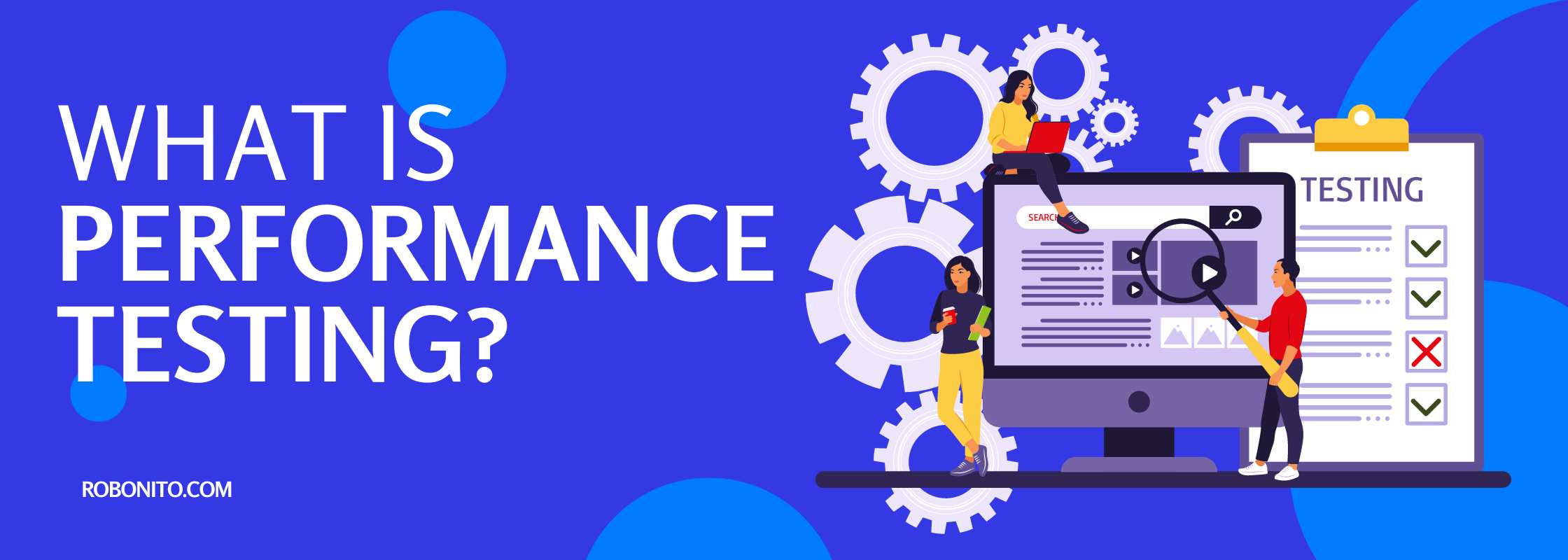Performance Testing and Load Testing
Ensuring the robustness, efficiency, and reliability of applications is paramount. Two crucial methodologies employed to evaluate software performance are Performance Testing and Load Testing. These testing approaches play a pivotal role in guaranteeing the seamless functionality of software products, yet they differ in objectives, methodologies, and applications.
Understanding Performance Testing
What is Performance Testing?

Performance Testing is a comprehensive assessment conducted to evaluate the responsiveness, stability, and scalability of software under varying conditions. It aims to determine the system's behavior and performance metrics such as speed, reliability, and resource usage, ensuring it meets predefined benchmarks.
Importance of Performance Testing

Performance Testing holds significant importance in identifying potential bottlenecks, uncovering performance-related issues, and optimizing the software for improved user experience. It encompasses various types, including Load Testing, Stress Testing, and Scalability Testing.
Insight into Load Testing
What is Load Testing?
Load Testing is a subset of Performance Testing focused explicitly on evaluating the system's performance under anticipated real-world load conditions. It simulates multiple users or concurrent transactions to assess the software's behavior and response time, gauging its ability to handle expected loads.
Importance of Load Testing
Load Testing is crucial for determining the system's reliability, scalability, and responsiveness when subjected to heavy user traffic or peak usage scenarios. It helps in identifying system limitations and potential failure points under high loads.
Differences Between Performance Testing and Load Testing
 While both Performance Testing and Load Testing aim to evaluate software performance, they differ in their objectives, focus areas, and testing scenarios.
While both Performance Testing and Load Testing aim to evaluate software performance, they differ in their objectives, focus areas, and testing scenarios.
Objectives and Goals
Performance Testing primarily assesses various performance metrics under different conditions, focusing on speed, scalability, and stability. In contrast, Load Testing specifically evaluates the system's behavior under anticipated load conditions, emphasizing its ability to handle expected user loads effectively.
Focus Areas and Testing Parameters
Performance Testing encompasses a broader range of performance metrics, including response time, throughput, and resource utilization. On the other hand, Load Testing primarily concentrates on assessing how the system performs under specific load conditions, emphasizing concurrency, and transaction processing.
Testing Scenarios and Simulations
Performance Testing involves testing scenarios under different workloads, from light to heavy, to determine the system's overall performance metrics. In contrast, Load Testing simulates expected user loads, stress levels, and peak usage scenarios to assess the software's reliability and response time.
Benefits of Performance Testing and Load Testing

Performance Testing and Load Testing offer several benefits to software development and deployment.
Improving Software Performance
Both methodologies aid in identifying performance bottlenecks, optimizing code, and enhancing overall software performance.
Enhancing User Experience
By ensuring that the software performs optimally under various conditions, these testing methodologies contribute to delivering a seamless user experience.
Identifying Bottlenecks and Weaknesses
Performance Testing and Load Testing help in identifying system weaknesses, bottlenecks, and potential failure points, enabling proactive measures for improvement.
Best Practices for Performance and Load Testing
Ensuring effective Performance and Load Testing requires adherence to certain best practices.
Test Environment Preparation
Setting up an environment that closely mirrors the production environment is crucial for accurate testing.
Test Planning and Execution
Thorough planning, defining test objectives, and executing tests under various scenarios are essential for comprehensive evaluation.
Analysis and Reporting
Analyzing test results, identifying issues, and generating comprehensive reports aid in making informed decisions for improvements.
Challenges in Performance and Load Testing
Despite their benefits, Performance Testing and Load Testing pose certain challenges.
Scalability Issues
Simulating real-world scenarios and handling scalability can be challenging, especially in complex systems.
Resource Constraints
Availability of resources, including hardware and tools, can impact the accuracy and scope of testing.
Realistic Test Scenarios
Creating test scenarios that accurately represent real-world usage can be complex and time-consuming.
The Role of Performance and Load Testing in Software Development Lifecycle
Integrating Performance and Load Testing seamlessly into the software development lifecycle is crucial.
Integration with Development Phases
Incorporating testing at each development stage ensures early identification and resolution of performance issues.
Continuous Testing Strategies
Implementing continuous testing strategies ensures ongoing evaluation and improvement throughout the software lifecycle.
Impact on Product Quality
Effective Performance and Load Testing contribute significantly to the overall quality of the software product, ensuring reliability and user satisfaction.
Selecting the Right Testing Approach
Choosing between Performance Testing and Load Testing involves various considerations.
Considerations for Specific Applications
Understanding the software's nature and intended use helps in selecting the most suitable testing approach.
Matching Testing Objectives
Aligning testing objectives with business goals ensures that the chosen approach fulfills the required criteria.
Cost and Resource Allocation
Considering the budget constraints and available resources aids in making a pragmatic choice between the two testing methodologies.
Conclusion
Performance Testing and Load Testing play instrumental roles in evaluating software performance. While Performance Testing evaluates overall system performance under diverse conditions, Load Testing focuses specifically on assessing behavior under anticipated loads. Both methodologies are critical for identifying bottlenecks, enhancing user experience, and ensuring the reliability of software applications.
FAQs (Frequently Asked Questions)
- What is the primary difference between Performance Testing and Load Testing?
- Performance Testing evaluates overall system performance, including speed and scalability, while Load Testing specifically assesses behavior under expected load conditions.
- Why are Performance Testing and Load Testing essential in software development?
- These testing methodologies help in identifying system weaknesses, optimizing performance, and delivering a seamless user experience.
- What challenges are faced in Performance and Load Testing?
- Challenges include scalability issues, resource constraints, and creating realistic test scenarios.
- How do Performance and Load Testing impact the software development lifecycle?
- They contribute significantly by ensuring early identification of issues, continuous improvement, and overall product quality.
- How can one select the right testing approach between Performance Testing and Load Testing?
- Factors such as specific application needs, testing objectives alignment, and available resources influence the selection process.
